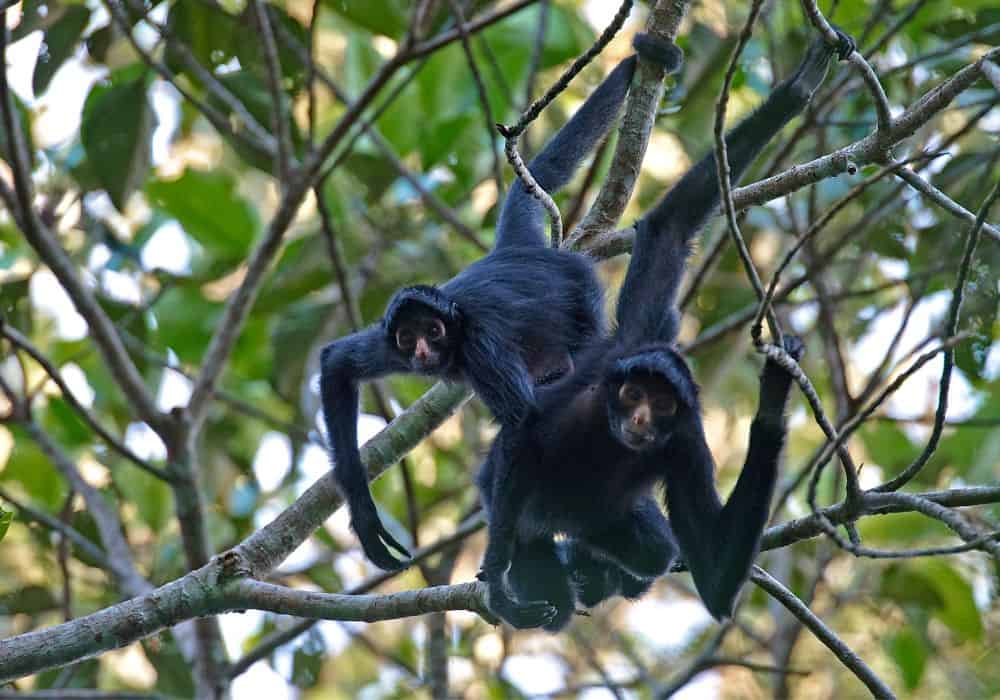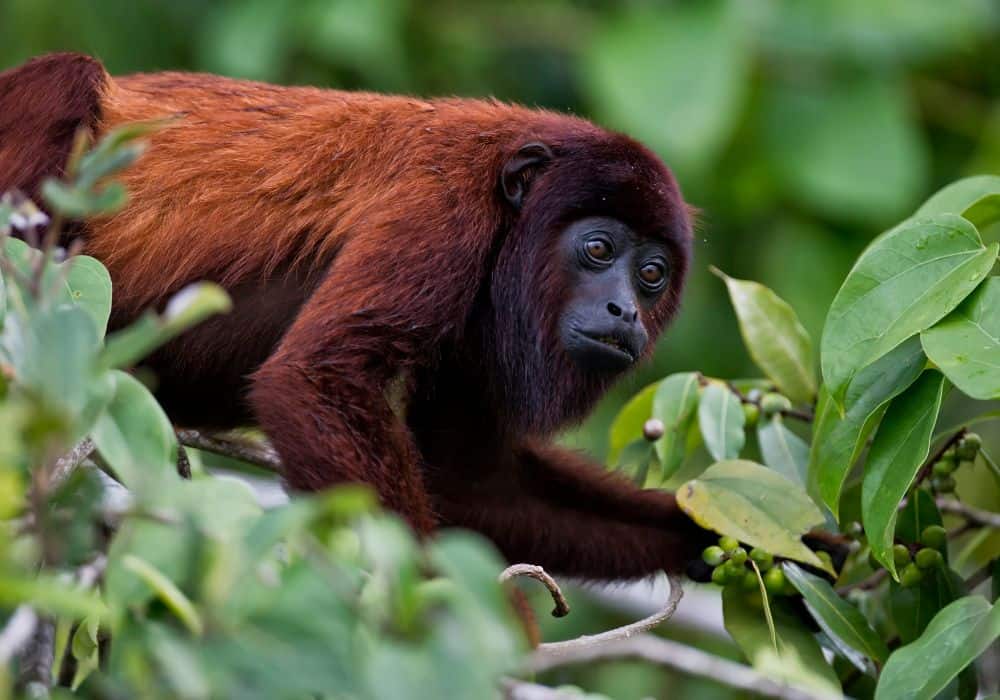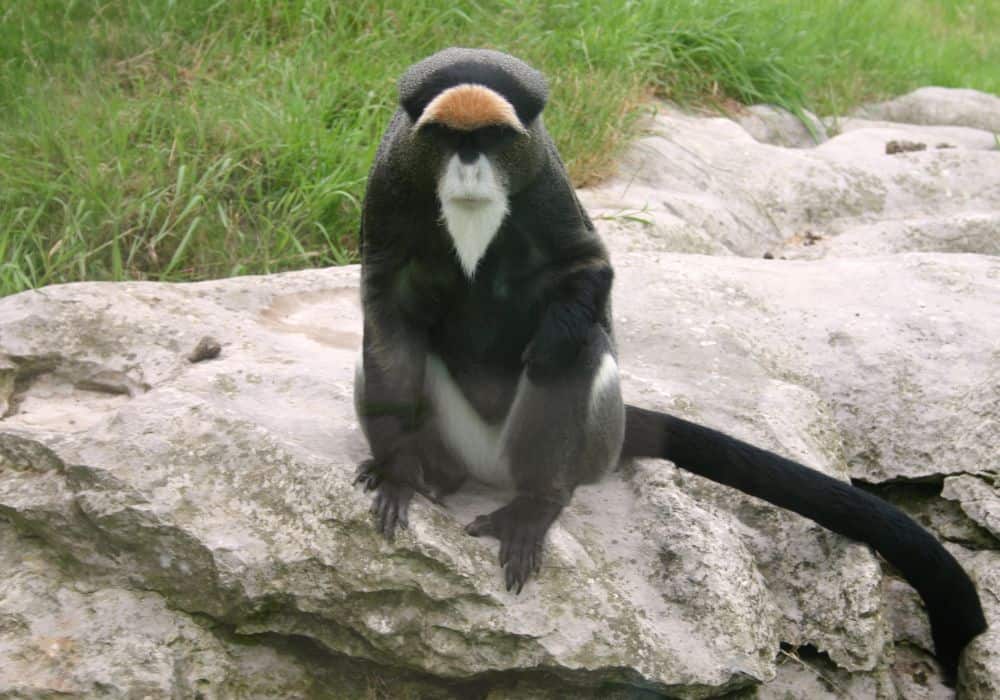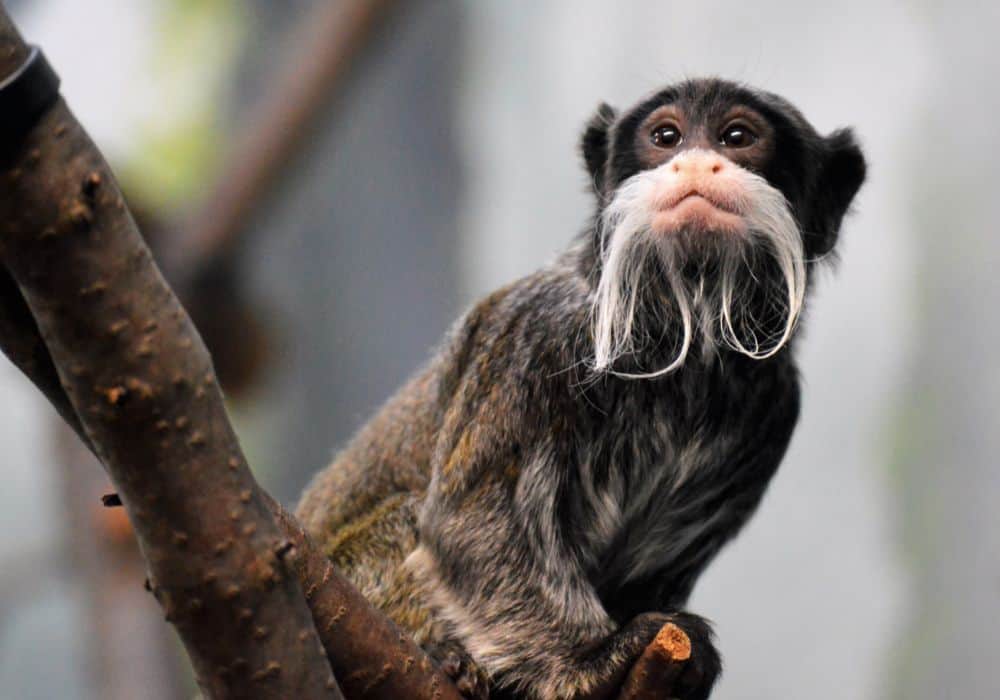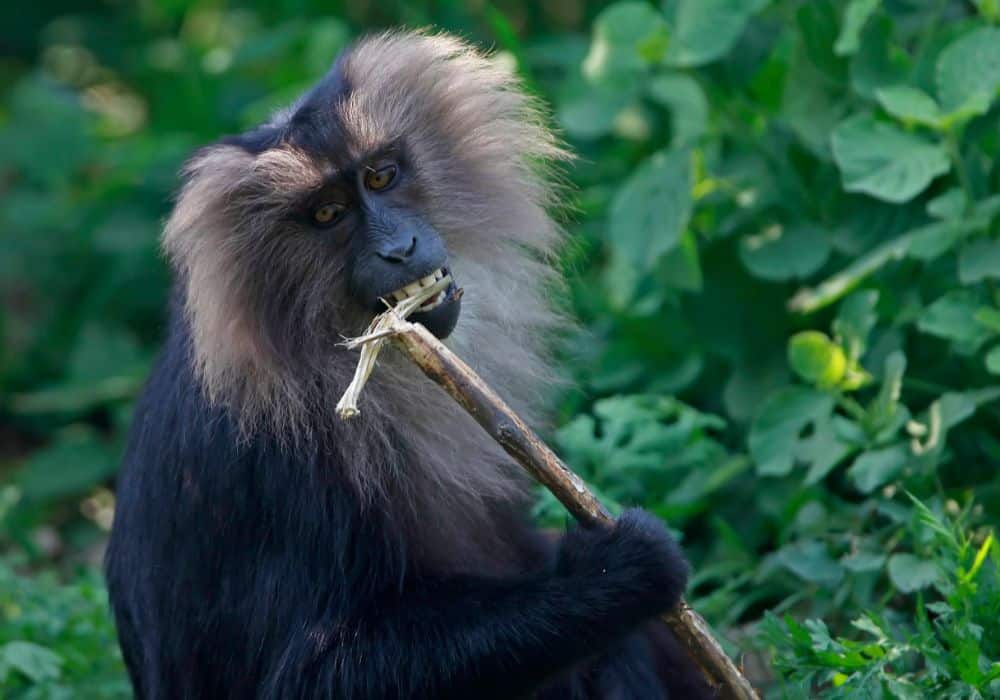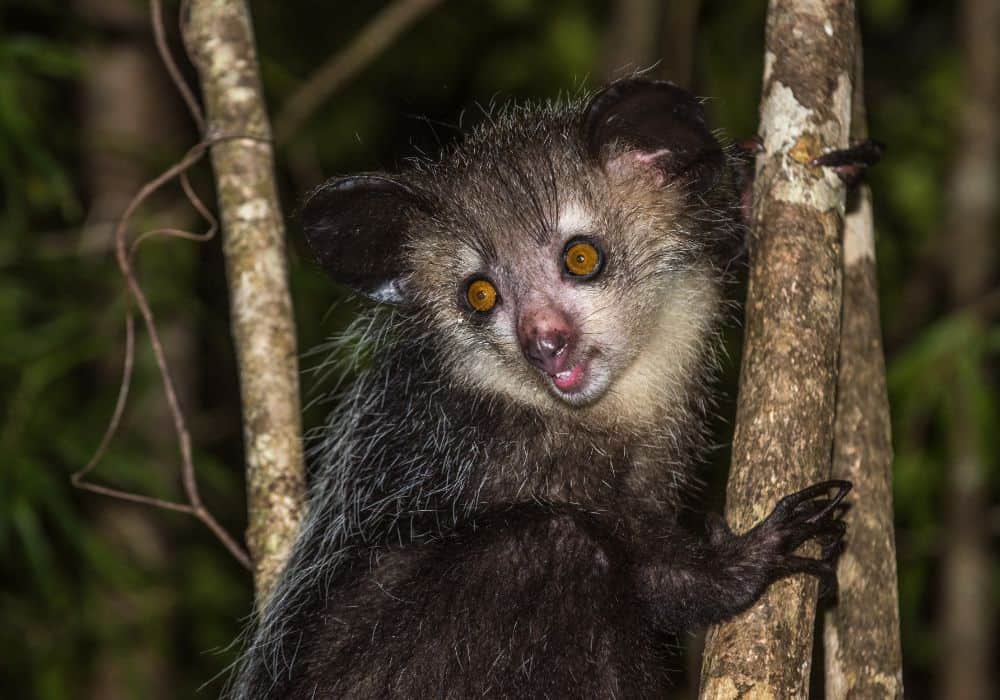The term “monkey” is frequently used in a generic sense to refer to a group of primate animals. They span from the smallest creatures, such as the monkey “Cebuella pygmaea,” also known as the thumb monkey to Grauer’s gorilla, the largest breed of monkey in the world.
In addition to having unique traits, the various groups of monkeys exhibit a variety of behavioral and food-related patterns.
We wish to cover every aspect of the monkeys’ diet in this article as well as some supplementary information that you might find interesting. By doing this, you will gain more knowledge about these amazing animals, with which we share most of our genes. Join us to discover its secrets.
Do Monkeys Prefer Meat, Plants, Or Both?
It is a fact that no monkeys exist in the animal kingdom that is carnivorous and only consume meat. Do monkeys consume meat then? Yes, there are some, but they do not make up their entire diet.
As we’ve already mentioned, the term “monkey” is widely used to refer to a variety of creatures that are found in distinct groupings.
As a result, they are members of the Anthropoidea suborder, which is further divided into the Catharine and platyrrhine infra orders. Superfamilies, families, and subfamilies make up each infra order.
In this respect, the cercopithecids and members of the Cebidae and Hylobatidae families of monkeys are omnivores. At the same time, every member of the colobus family is a herbivore.
Regardless of the category to which they belong, these animals normally have a relatively diversified diet, yet they may have a preference for a certain food.
What Do Monkeys Eat?
One of the most diverse diets found in the animal kingdom is that of the monkey. Because they are mammals, babies eat primarily breast milk for the first few months of life, but as they get older, they can also eat vegetables, nuts, seeds, fruits, and even meat.
But in addition, the monkeys also eat leaves, sap, and bird eggs. Their traditions are heavily influenced by the environment in which they grow.
Generally, it may be said that monkeys prefer fruits above other foods because they always choose them. Mango, peach, pumpkins, melon, avocado, watermelon, strawberry, carrot, and notably bananas—the food that monkeys are most often associated with—are some of the fruits and vegetables that monkeys frequently search for.
They also consume ants and spiders, which is pretty unique, and it should be noted that they prefer some insects. Their diet is similar to that of humans because they frequently eat the meat of small animals, birds, and amphibians in the wild.
Now we will discuss various breeds of monkeys and their diets.
Black Spider Monkey
- Type of monkey (Family): Atelidae
- Name of Species: Paniscus
- Size: 22.6 inches
- Type of diet: Omnivorous
- Maximum life expectancy: 38 years
One of the most well-known primates in Central and South America’s Amazon is the spider monkey.
Despite having little resemblance to these insects, they are given the widespread term “spider monkey” because of their entirely black fur and lengthy limbs, particularly their arms.
True omnivores like the spider monkey exist. Fruits and seeds make up the majority of their diet, but they also enjoy insects and, given a chance, will chase frogs and small birds.
They are among the most intelligent members of the monkey family, and because of their size, they are prey to many Amazonian tribal communities, who use them as an excellent supply of meat for their families.
Colombian Red Howler
- Type of monkey (Family): Atelidae
- Name of Species: Seniculus
- Size: 22 inches
- Type of diet: Omnivorous
- Maximum life expectancy: 25 years
The Colombian howler monkey, as its name indicates, is found in Colombia, but they also inhabit the jungles of Peru, Ecuador, Venezuela, and Brazil. (The Americas)
Its fur is reddish brown and it owes its name to the fact that during the mornings it emits a howl that can be heard 3 kilometers away from its territory. They emit this howl every time they must move in troops to look for food and position themselves in the trees and branches suitable for feeding.
Although they are omnivores, 65% of their diet is based on plants and fruits. They share a habitat with the spider monkey, but they are not as fast as their cousins, nor as adept at hunting or catching insects, that is why they keep eating certain leaves from the jungle.
They show a preference for figs and prefer to walk instead of swinging on the branches. They live in herds where a single male and several females rule.
De Brazza’s Monkey
- Type of monkey (Family): Atelidae
- Name of Species: Cercopithecidae
- Size: 20 inches
- Type of diet: narrow diet
- Maximum life expectancy: 26 years
These monkeys are found in Africa’s tropical jungle. It has a distinctive appearance. They have black fur but stand out from the crowd with their white beard and reddish-brown brows.
They are quite elusive and challenging to locate. They often consume leaves, stems, and insects and prefer to live close to rivers and marshes. Flowers, certain mushrooms, and fruit are also favorites.
They typically reside on tree branches at a great height in couples or small groups. They have a lot of predators, therefore they are quite cautious. They are hunted for food by eagles, leopards, chimpanzees, and humans.
Emperor Tamarin
- Type of monkey (Family): Cebidae
- Name of Species: Imperator
- Size: 10 inches
- Type of diet: specific
- Maximum life expectancy: 20 years
These adorable monkeys got their name from a German emperor who had a mustache that was white and fairly long, just like theirs.
These monkeys are found in the lowlands of the Amazon jungle, where they primarily eat fruits, flowers, and insects. However, they also like small mammals. They even wander outside to hunt and take young chicks from nests.
The males look for the safety and upbringing of the young in small herds of 6 or 7 monkeys. While the females are devoted to providing and hunting food, they are better at defending and caring for them than the females.
Lion Tailed Macaque
- Type of monkey (Family): Cercopithecidae
- Name of Species: Silenus
- Size: 22 inches
- Type of diet: omnivore(wide)
- Maximum life expectancy: 40 years
The nutrition of lion-tailed macaques is extremely diversified. Fruits, seeds, vegetation, flowers, insects, and even small lizards are all consumed by them.
They can swiftly store food in their cheek pouches, which they have. In this manner, they can gather what they require and, if necessary, flee from danger. They typically remove the food from their cheeks to consume it gently after they are secure and at ease.
The male monkeys utilize their tails, which resemble those of lions, to demonstrate their position in the group. The 17 various call types they utilize to interact with one another total.
Aye-aye Monkey
- Type of monkey (Family): Daubentoniidae
- Name of Species: madagascariensis
- Size: 15 inches
- Type of diet: omnivore
- Maximum life expectancy: 25 years
One of the most active primates at night is the Aye-aye monkey. Although they are omnivorous, a large portion of their food consists of insects (termites and others), which they hunt in a highly distinctive manner.
They employ their hands’ varied finger lengths and thicknesses as a complex toolbox, using each finger for a particular task to capture evasive insects.
It is a very distinctive method known as percussive foraging. This clever creature starts by touching various areas of a tree’s bark and then uses its big ears to detect insect-made hollows inside the trunk.
Once they have discovered their little food, they use their sharp teeth to crack the bark and their specialized fingers to extricate the insects.
They are also recognized as the only species of monkeys that can successfully consume coconuts. They are endangered and can be found on the island of Madagascar.
Can monkeys be kept as pets?
Currently, the UN-created CITES Convention (Convention on International Trade in Endangered Species of Wild Fauna and Flora), which was established to control trade and prevent illegal animal trafficking, protects monkeys.
On the contrary, each nation may have its laws governing the domestication of invasive or exotic animals.
Adopting a monkey from an unreliable source, through persons, or via the Internet is not advised in any nation.
The majority of these animals are hunted, abruptly taken from their environment and communities, and held in abhorrent conditions until they are resold on the underground animal trafficking market.
Additionally, by adopting a monkey whose origins are unknown, we unintentionally support animal trafficking.
The legal holes or lack of particular legislation regarding the ownership of exotic animals should be complemented by logic and common sense.
Although keeping capuchin, and squirrel monkeys as a pet are permitted in some nations, we should be aware of these animals’ demands and our capabilities before adopting them to give the best environment for their growth.
Regardless of species, every animal deserves to live a life that is honorable, joyful, and healthy. And we must never let our desires compromise their rights.
Final Words
We sincerely hope that this tutorial has given you a better understanding of these amazing creatures with which our species shares so many traits.
It’s necessary to understand what and how to feed monkeys, but it’s even more crucial to understand that these creatures are part of nature.
Except for a few monkeys that cannot be returned to their natural home, they should never be denied their freedom in the natural world.
And in those circumstances, they ought to be under the supervision of experts or organizations with knowledge of how to maintain the lives of wild animals.

